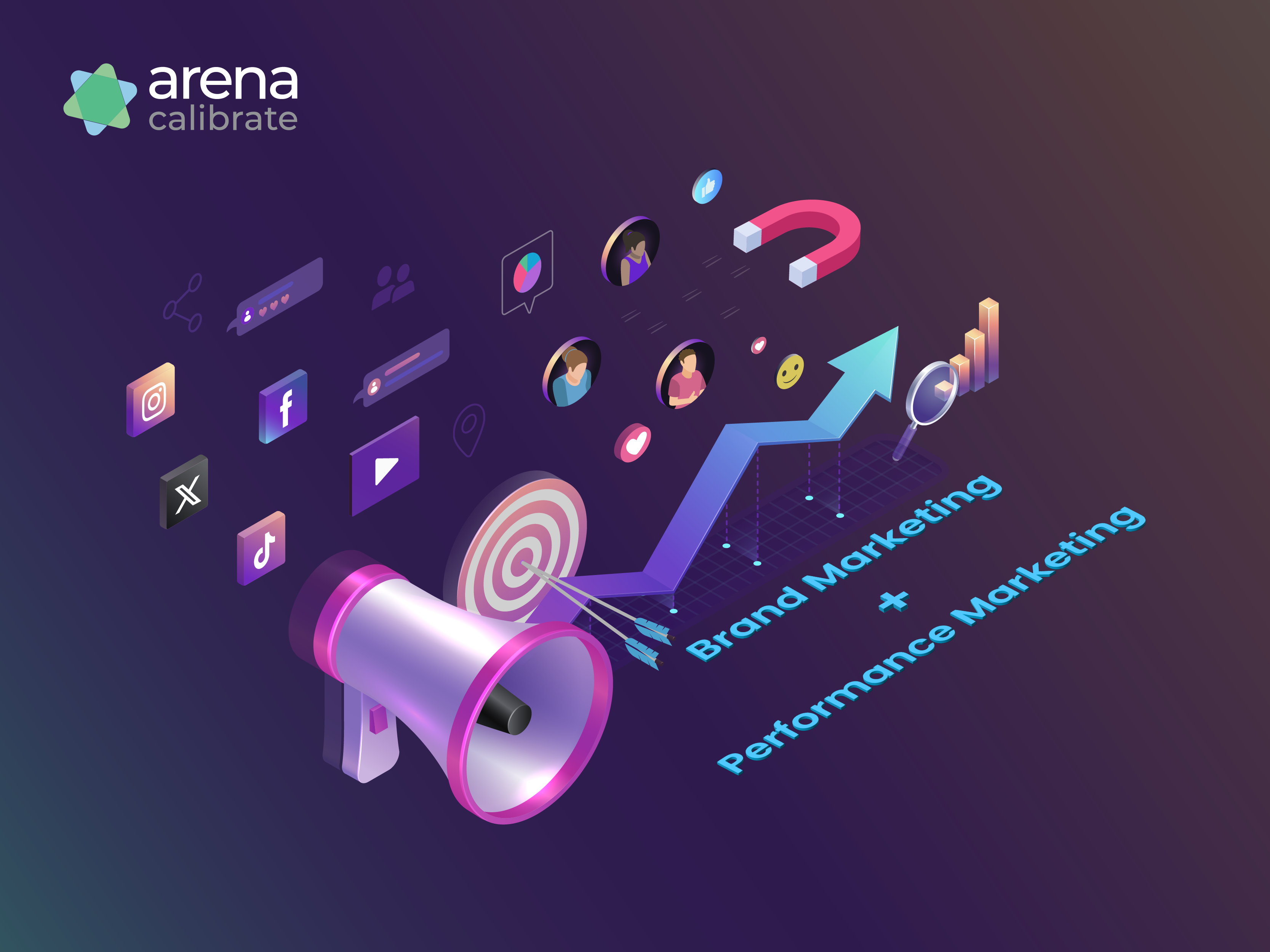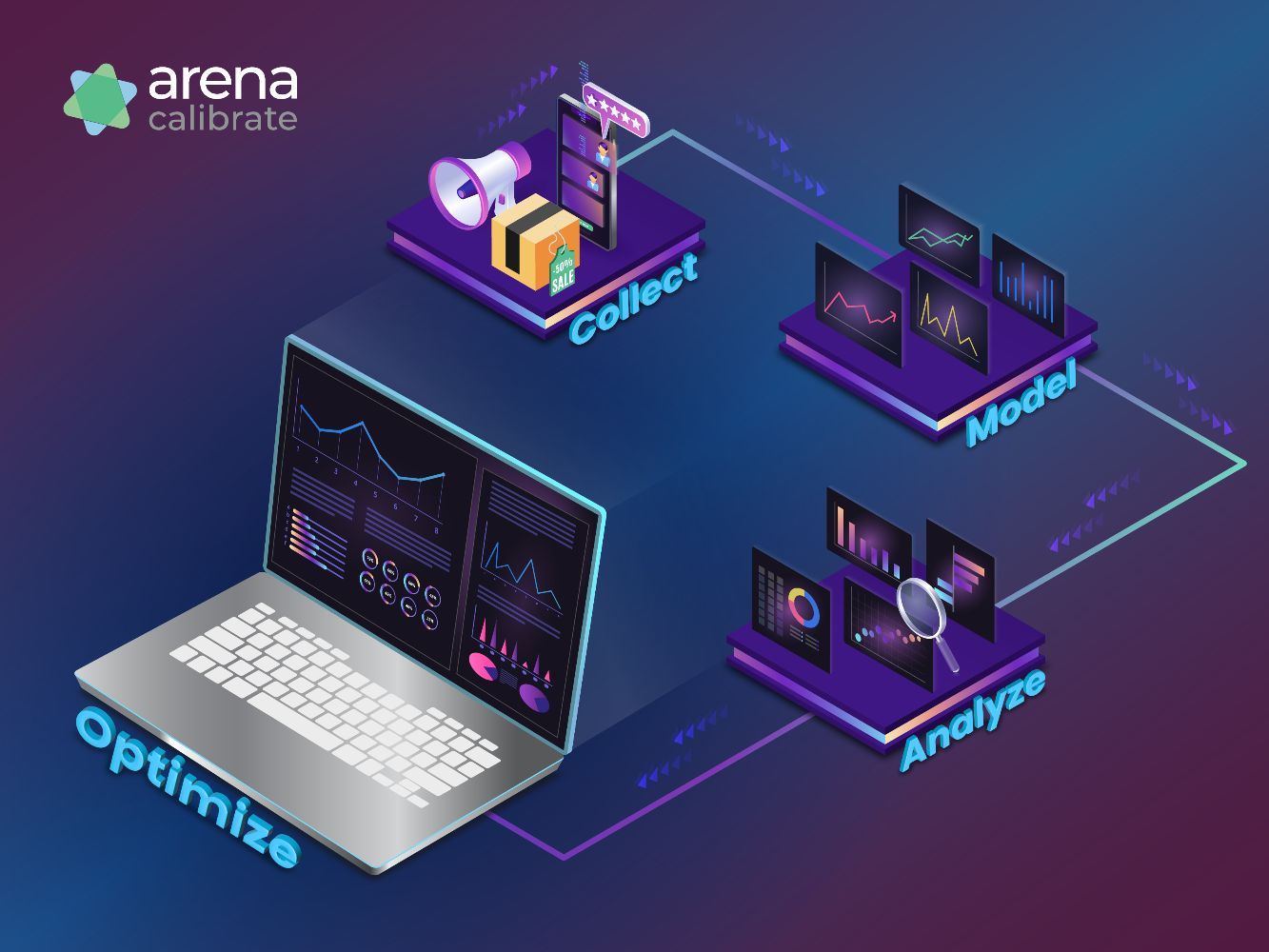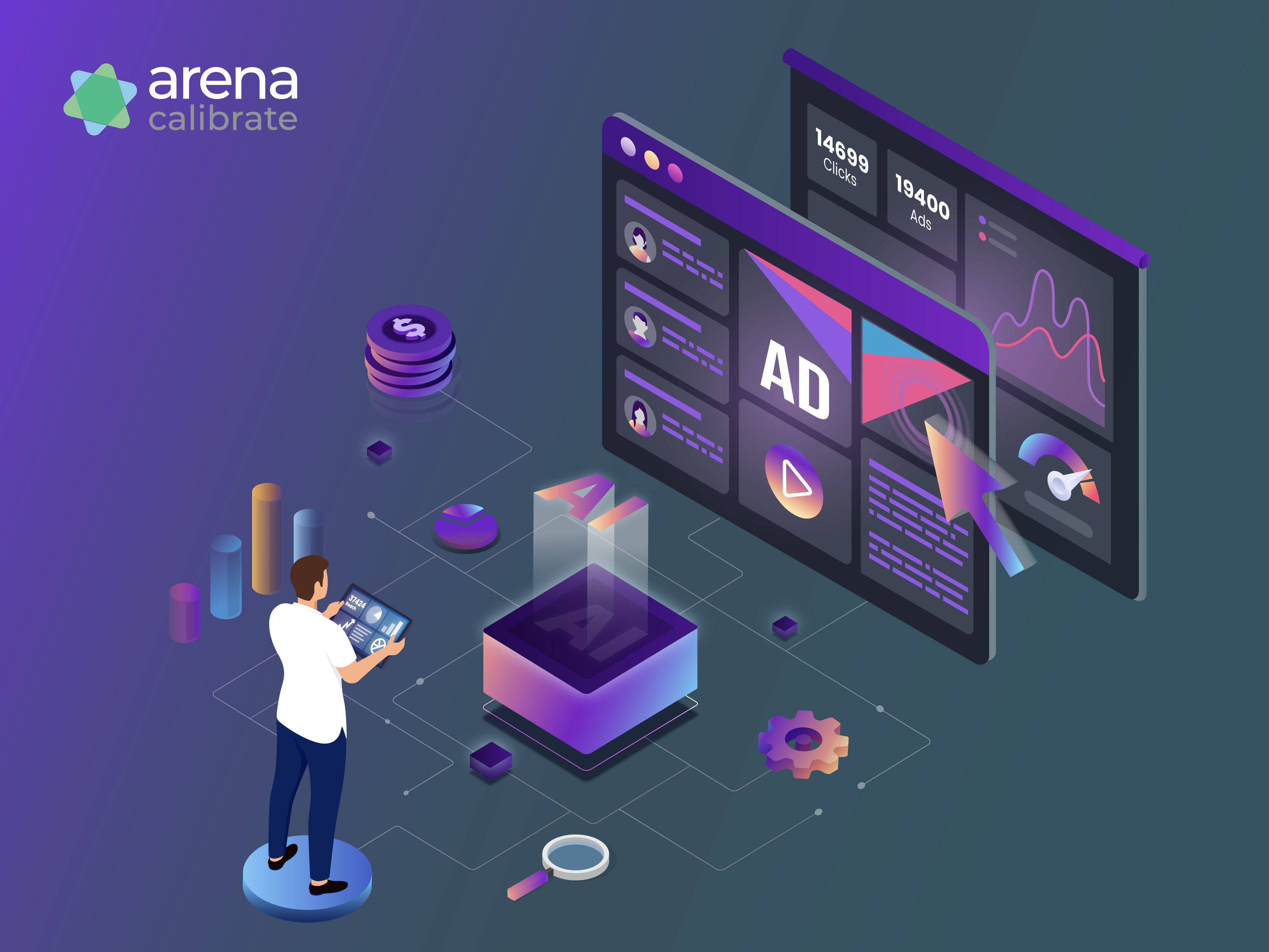The following is a summary of our popular webinar conducted by Kapil Vyas, Chief Marketing Technologist, and Dave deCourcelle, Customer Success & Growth at Arena Calibrate.
Third-party cookies out, So what’s next:
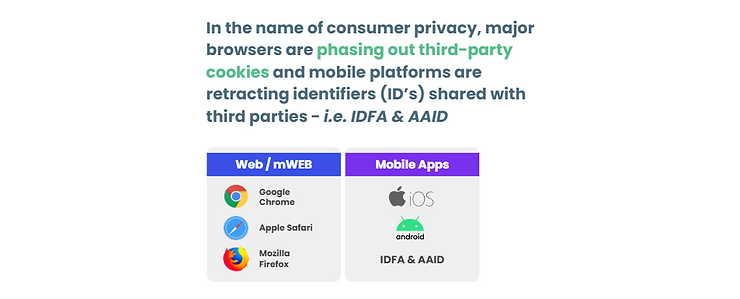
2023 marks a fundamental shift in digital marketing. The pressure of consumer privacy concerns and the emergence of privacy regulations like GDPR, CCPA, and iOS’14 updates are phasing out third-party cookies in browsers and IDFs (Apple) and Ad IDs in mobiles.
This means a drop in your ad campaign performance, forcing you to radically transform your digital marketing strategy, Martech infrastructure, and process.
Remarketing Impacted. An e-commerce example.
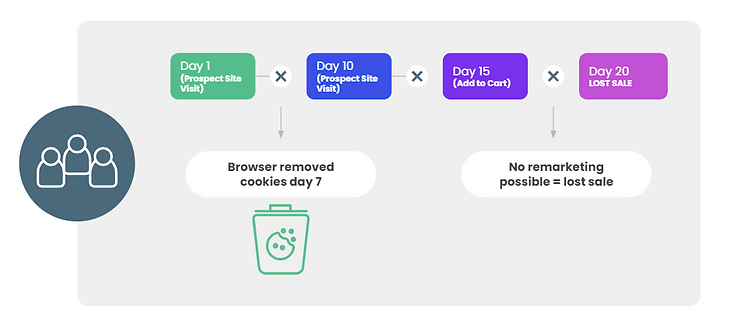
Typically, when a prospect visits your e-com website, a cookie is placed that tracks their interactions or behavior. When they revisit your website and do a conversion event, e.g., add an item to the cart, or they continuously move down funnels like browse product options, etc. We identify this behavior through the cookies. We then remarketed to that lead with a targeted ad, e.g., remind them, “you have a checkout item in your cart.”
Now that kind of remarketing is going away. The same applies to B2B as well. With third-party data going away, it now becomes critical to focus on first-party data. Let’s see how.
Understanding First-Party Data
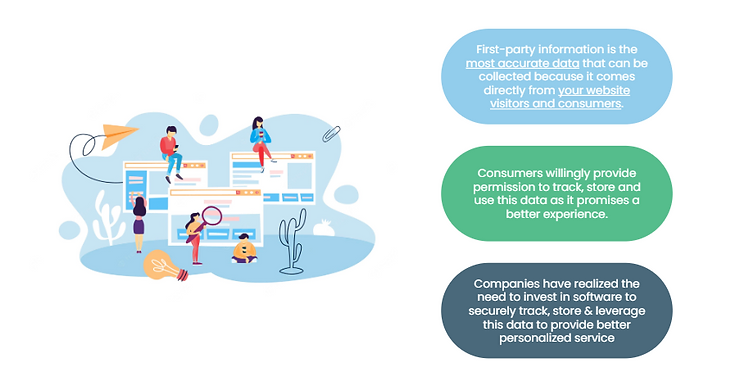
First-party information is any accurate piece of data that your business has collected directly from your website visitors. This could be at any touch point, your website, mobile apps, physical stores or in-store kiosk, or your loyalty programs.
At a very basic level, your Personal Identifiable Information (PII) is first-party data that includes your consumer's first name, last name, phone number, and email address, uniquely identifying your prospect or consumer. It also includes purchase transaction history; for example, if a user bought a specific product, the quantity he or she bought, the date of purchase and location, did she check on the website before they visited the store, or information collected when they are calling in for repair of services or products. You have collected such data over the years from your consumers, and we are turning our attention to this data repository now. This can be used in multiple ways, not only for marketing, but we'll talk about what else you can do with this kind of data.
Leveraging First-Party Data
Today, there are multiple touch points your consumers interact with your brand or your product, or your services. These data points can be brought into your data warehouse, and from that point onwards, you can take several different actions. For example, bring in some personalization to your consumer actions to drive engagement or trust with your brand leading to more sales and hence lifting your return on ad spend. Eventually, with these real-time insights, you can drive your analytics dashboard from personalization to analytics.
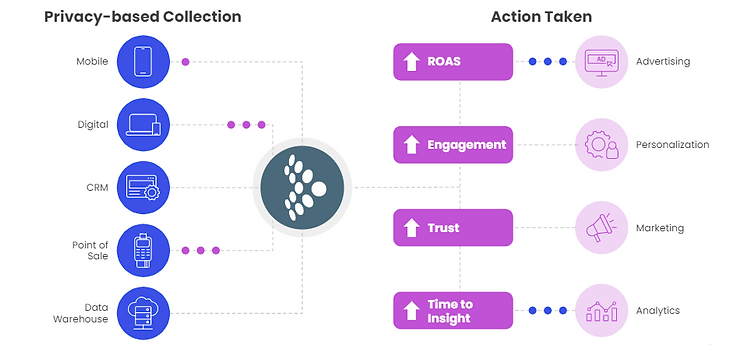
Three pillars to build from first-party data
- You can accurately measure and analyze your key performance indicators.
- You can build the audience segments on top of the data that you have collected.
- You can monitor and visualize these near real-time performances of your campaigns which are currently live.
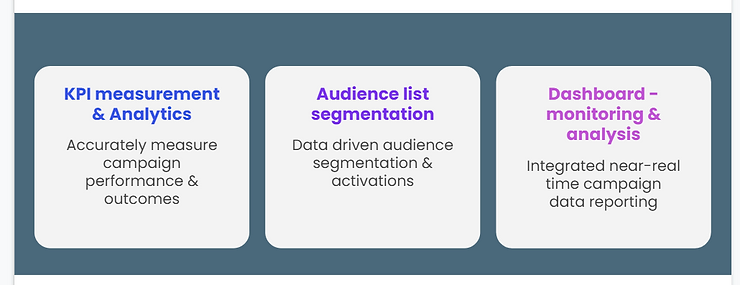
Targetting with First-Party Data
Here is how it all comes together with a first-party data solution in place. Most businesses have implemented Google Analytics or Adobe Analytics as their web analytics platform. When a lead or prospect visits your website, a unique CID, a consumer ID or a cookie ID, or your analytics ID is generated.
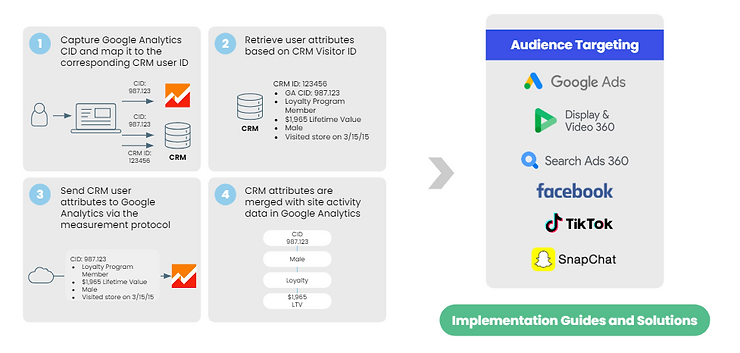
We just connect the dots in such a way that benefits your campaigns; for example, if you can simply connect these consumer IDs to your CRM ID. So when the consumer first visits your website, when you attach the CRM ID you are also bringing in a lot of other attributes like loyalty program IDs, lifetime value, and your consumer profiles, and from there, you send this lead's CRM attribute to your behavior attribute such that you can push this information back to retargeting campaigns. Thus you have enriched this information with your CRM data. You can take this audience back to Google ads for display/search marketing; you can take it to the DV360 for third-party networks and even to Facebook, Snapchat, TikTok, or cross-platform targeting.
Facebook custom audience match rates have fallen drastically to 25% after the iOS’14 updates and other laws played into effect. Studies show that this first-party data loop can improve match rates to 90%. Google match rates, too have moved up to 50-60%.
The first step is to ensure you have some form of a unique identifier for each prospect/customer in your CRM, be it HubSpot or Marketo, or any inbound CRM platforms.
First-Party Data + Machine Learning
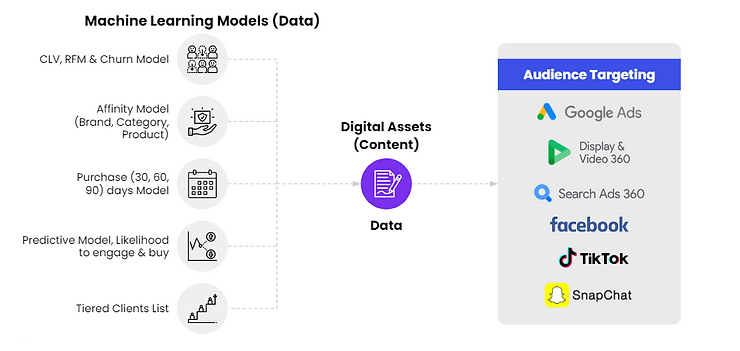
You can build machine learning models on the first-party historical data stored in your data warehouse. Each model has a different utility and approach to looking at and leveraging the same data.
They range from client lifetime value model or LTV model, recency frequency and monetization model, or Churn model; these are different use cases that you can unlock with your data.
Let's say you would like to bucket your clients who have an affinity towards certain products or let's say you wanted to build a purchase model for a 30, 60, or 90 days purchase cycle; you can also build a predictive model so that when a new user comes to your website, you will be able to predict whether this user is likely to buy this product in a certain time period because this user has behavior similar to other buyers. This allows you to build an audience list or deliver a personalized experience or predict your conversions in different categories.
A study done by the IDC showed that ineffective data management actually costs organizations 20 to 30 % of revenue every year.
Data without action is of no use, actually, so what we are really proposing is you not only bring the data that you can act on but kind of build a predictive model on it and take that data back to your audience targeting platforms.
We'll talk to you over the next few sections about how you would like to bring that sort of feedback loop back to your business to enrich and optimize to a level where your marketing can benefit continually from the data that you have collected over the years.
Embracing First-Party Data: Success Stories
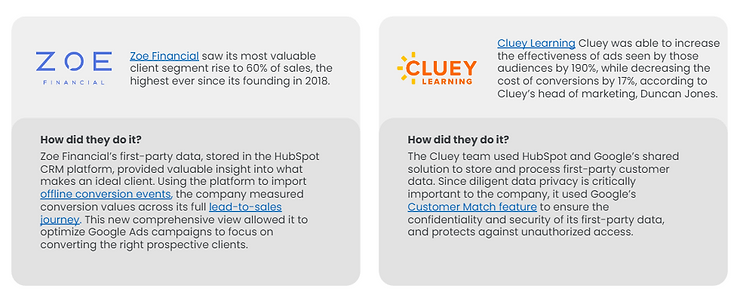
Here's an example: Zoe Financials lifted conversions of its most valuable client segment to 60% of sales by simply bringing offline conversion events to their campaigns into HubSpot and optimizing their Google ads campaigns.
Chloe learning’s customer match is another example, by simply matching their client conversion data, they have seen a leap of almost 190% in sales while decreasing the cost of conversion by 17%.
Let's talk about a really basic digital marketing architecture that can help bring it all together.
Ideal first-party data-driven models and the new digital marketing architecture for 2023
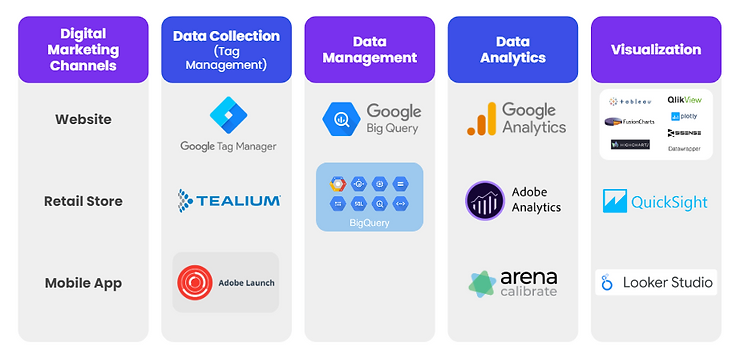
Let’s start with the multiple channels or touch points a lead or prospect interacts with your business, like websites, retail stores, and mobile apps. The important piece here is data collection actually, so in the 2nd swim lane, you can explore deploying Tag Management platforms such as Google Tag Manager, Tealium, and Adobe Launch, some of the ways you can implement consent-based privacy-focused data collection.
When a prospect visits your website, a data collection platform is activated, and in the next lane, you will see a data management layer bringing the raw data into your warehouse, which could be Google Big Query, Snowflake, etc., an architecture where you can think of these layers in play to bring in an enriched data kind of end-to-end flow. The fourth layer answers the question of how you analyze it, and the options out there could be Google Analytics or Adobe analytics, or, better yet, Arena Calibrate to help aggregate that data.
Finally, it's a visualization layer that could be Looker Studio (formerly Google Data Studio) QuickSight or Tableau. Looking at the above graphic at a high level, you will see this is how the data life cycle flows. It is really critical for a marketer to understand this in near real-time and have a deep insight into how it's functioning or have a finger on the pulse of your marketing health in terms of conversions.
38 % of brands that embraces first-party gathering strategies and have the technology know to bundle that data with context and actually categorize it usefully.
Tapping the power of Arena Calibrate
In the context of the real-time optimization loop we have talked about, do read how Arena Calibrate scores over other analytics and visualization tools and how it can really help you make smaller marketing decisions with first-party data. Calibrate offers cost-effective Enterprise level marketing revenue and ROI dashboards as a platform that includes data warehousing, data integration, and data visualization capabilities. Further, it provides comprehensive setup and support with a whole army of BI experts that can operate essentially as an extension of your team.
Ultimately our clients get a single source of analytics truth by bringing all marketing and analytics performance and even sales performance all in one place and providing cross-platform and cross-campaign Intel and insights. All in all, it reduces reporting and decision-making bandwidth across your teams, taking away manual compiling of reports.
Clients can actually see how their efforts are contributing to ROI and what's driving and impacting their Marketing sales and revenue funnel.
300+ customers we worked with

Here are a few names from our 300 plus B2B and B2C customers that we've worked with Arena Calibrate across different industries supporting their marketing ROI or ROAS and Analytics.
8-step audit to review your preparedness
Finally, we'd like to give away this simple audit framework or a first-party data collection framework worksheet to help you assess where you are today.
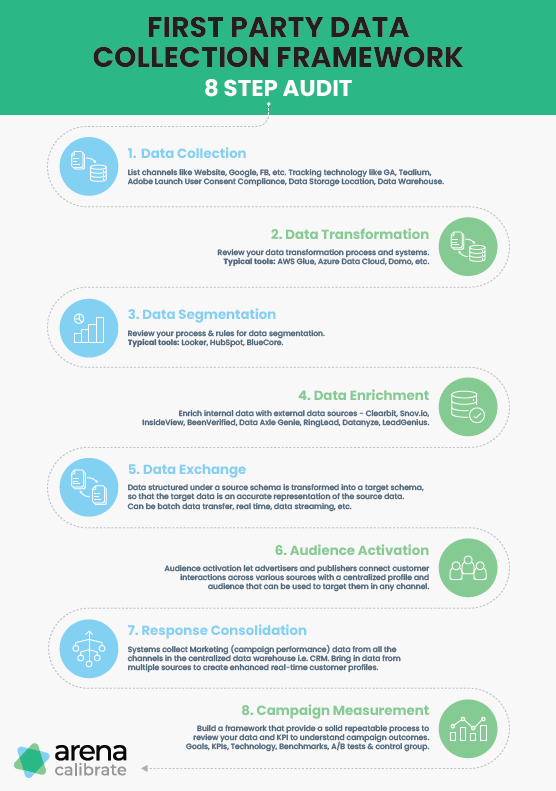
If you would like to request a free demo of Arena Calibrate or a free consultation on optimizing first-party data strategy methodologies, or even identifying what sort of tools you need in terms of a tech stack, email us right away!


